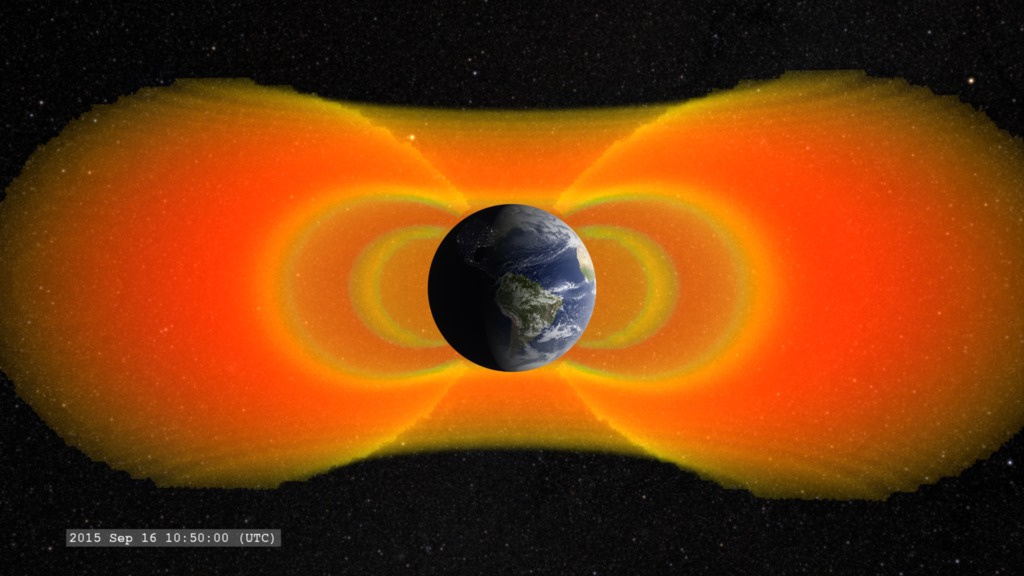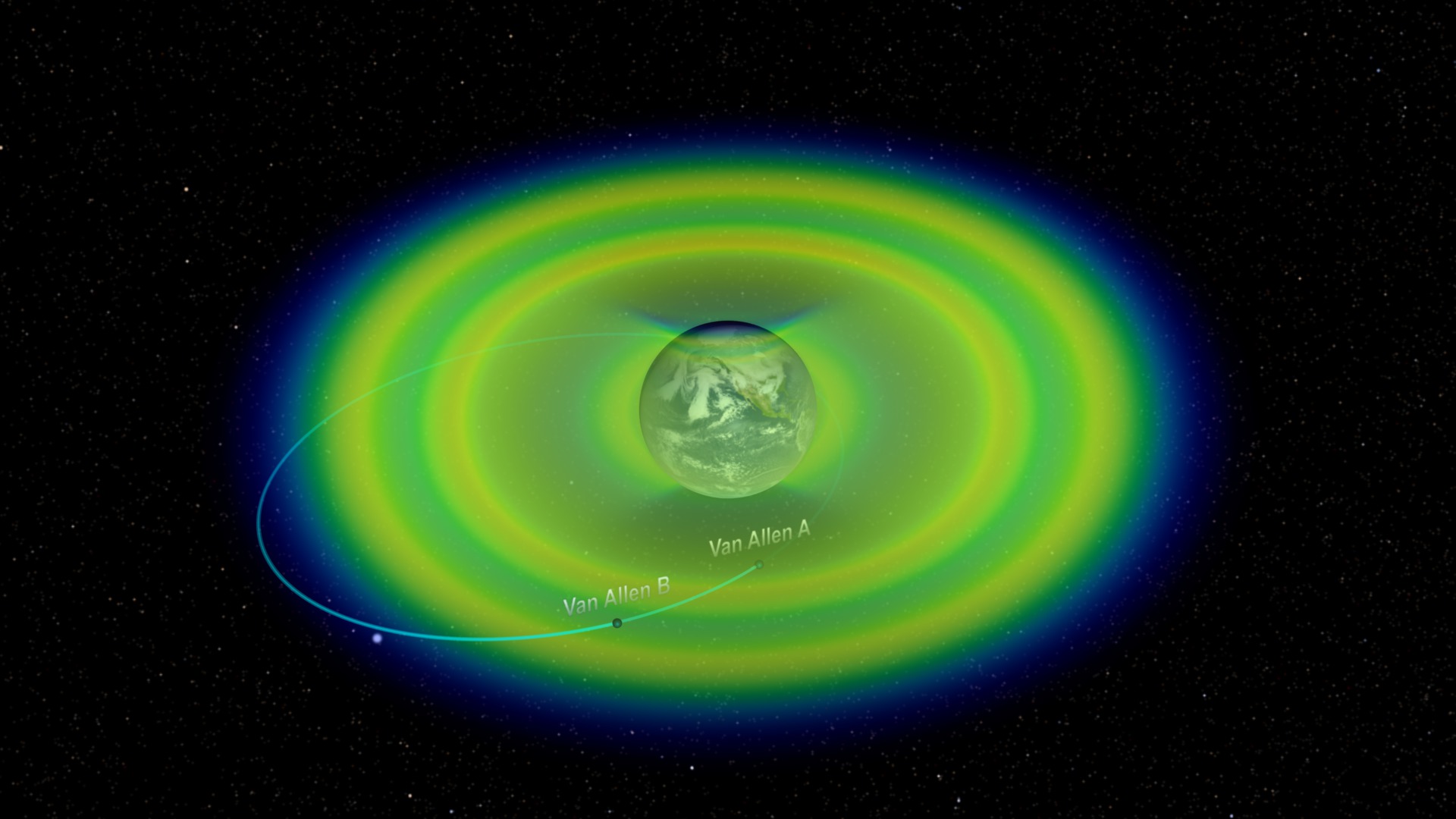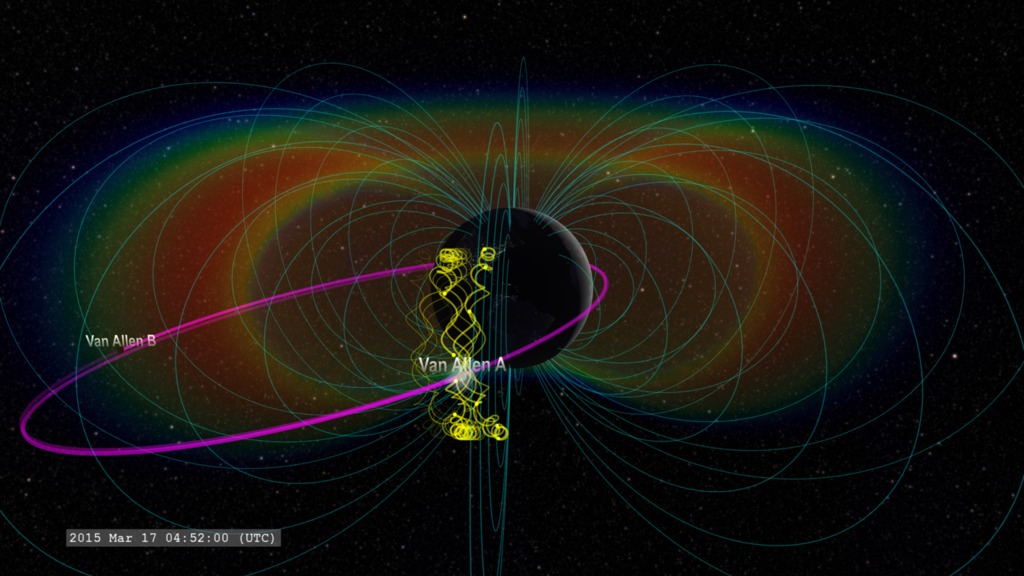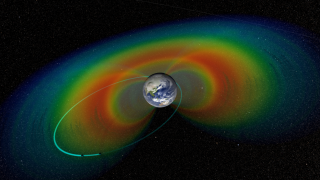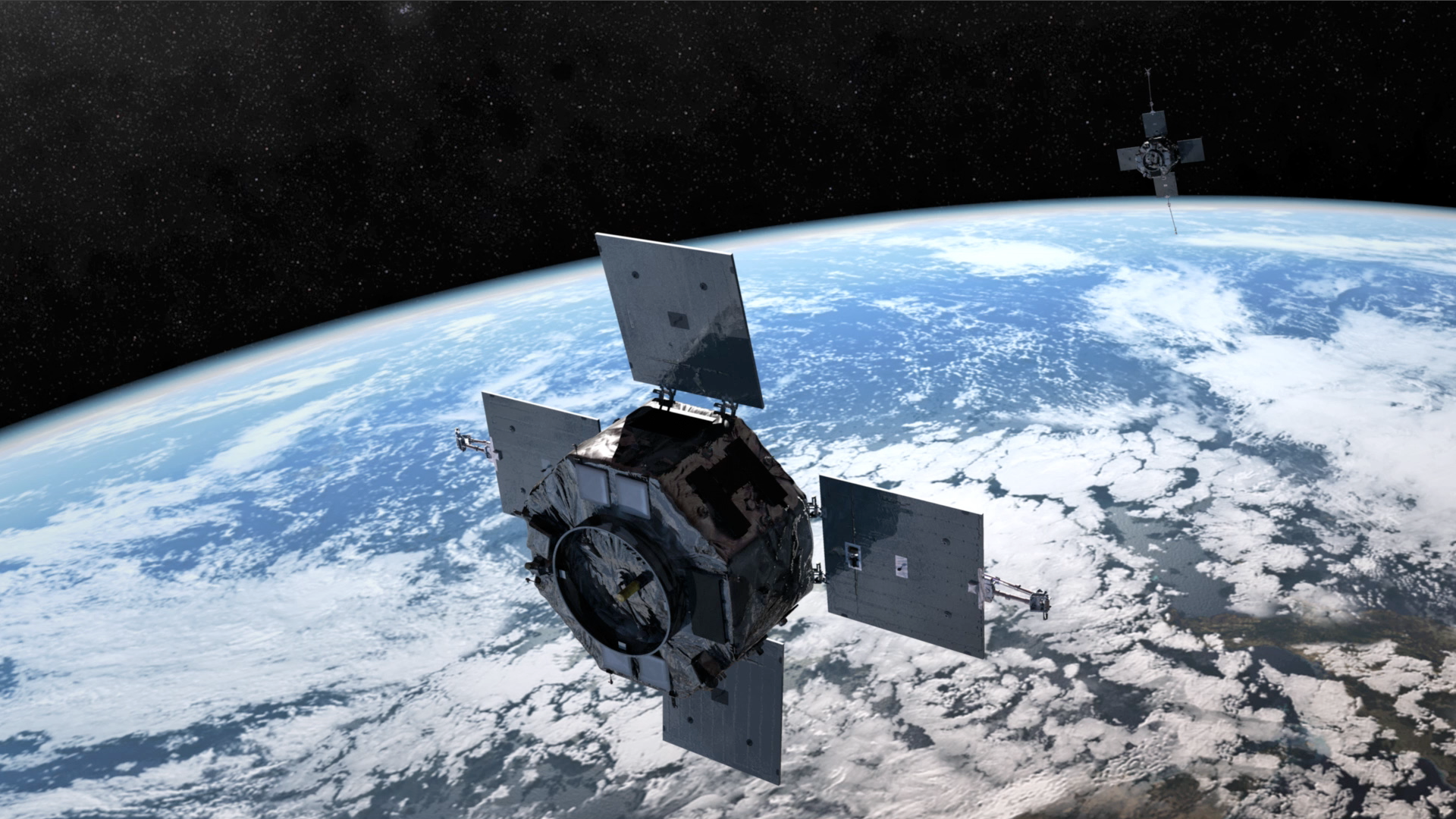Van Allen Probes
Overview
Formally the Radiation Belt Storm Probes (RBSP)!
Science Results
Leaky Radiation Belts
Go to this pageThis visualization opens with a full view of the radiation belt of trapped electrons circling Earth. We open a slice of the belts, to display a cross-section for clarity and move the camera to a more equatorial view. Earth rotation and solar motion have been turned off for this visualization to reduce distracting additional motions. || LeakyBelts_FullData_ObliqueIntro.slate_CRTT.HD1080i.0600_print.jpg (1024x576) [113.8 KB] || LeakyBelts_FullData_ObliqueIntro.slate_CRTT.HD1080i.0600_searchweb.png (180x320) [83.0 KB] || LeakyBelts_FullData_ObliqueIntro.slate_CRTT.HD1080i.0600_thm.png (80x40) [6.0 KB] || ObliqueIntro (1920x1080) [0 Item(s)] || LeakyBelts_FullData_ObliqueIntro.HD1080i_p30.mp4 (1920x1080) [77.0 MB] || LeakyBelts_FullData_ObliqueIntro.HD1080i_p30.webm (1920x1080) [5.5 MB] || ObliqueIntro (3840x2160) [0 Item(s)] || LeakyBelts_FullData_ObliqueIntro.UHD2160_p30.mp4 (3840x2160) [279.0 MB] || LeakyBelts_FullData_ObliqueIntro.HD1080i_p30.mp4.hwshow [210 bytes] ||
Van Allen Probes New View of the Radiation Belts
Go to this pageThis visualization is constructed from some of the first data from the Van Allen Probes (formerly RBSP).The belts are constructed from particle samples by the probes as they pass through the belt, so each 3-D snapshot corresponds to the outward or inward portion of the probes' orbit.The major result from this early data is the recognition of a third radiation belt (the outer belt appears to actually be two belts). ||
Prompt Electron Acceleration in the Radiation Belts
Go to this pageElectrons gyrating along the lines of Earth's magnetic field make another orbit around Earth and strike the Van Allen Probe A AGAIN! || PromptAccel_EventCloseup_SlowOblique.slate_RigRHS.HD1080i.0540_print.jpg (1024x576) [139.2 KB] || PromptAccel_EventCloseup_SlowOblique.slate_RigRHS.HD1080i.0540_searchweb.png (320x180) [90.9 KB] || PromptAccel_EventCloseup_SlowOblique.slate_RigRHS.HD1080i.0540_thm.png (80x40) [6.0 KB] || 1920x1080_16x9_30p (1920x1080) [0 Item(s)] || PromptAccel.HD1080i_p30.mp4 (1920x1080) [48.5 MB] || PromptAccel.HD1080i_p30.webm (1920x1080) [3.1 MB] || PromptAccel_EventCloseup_SlowOblique.HD1080i_720p30.mp4 (1280x720) [24.1 MB] || 3840x2160_16x9_30p (3840x2160) [0 Item(s)] || PromptAccel_EventCloseup_SlowOblique_2160p30.mp4 (3840x2160) [141.9 MB] || PromptAccel.HD1080i_p30.mp4.hwshow [189 bytes] ||
The Van Allen Probes (formerly Radiation Belt Storm Probes - RBSP) Explore the Earth's Radiation Belts
Go to this pageThe Radiation Belt Storm Probe (RBSP) is actually two satellites that will travel on a elliptical orbit around the Earth, ranging between 1.5 and 6 Earth radii. This range covers the inner region of the Earth's geomagnetic field. In this region, many of the magnetic field lines intersect the surface of the Earth in the north and south. This means that lower energy ions and electrons, some 'boiled off' the Earth's ionosphere by solar ultraviolet radiation, can be trapped along these field lines. The charged particles spend their time bouncing between the 'mirror points' in the Earth's magnetic field. This trapped population forms the radiation belts around the Earth. The radiation created by this charged particle population can be hazardous to satellites and astronauts so it is important to understand their characteristics. ||
Pre-Launch
RBSP L-14 Press Conference
Go to this pageThe Radiation Belt Storm Probes mission is part of NASA's Living With a Star Geospace program to explore fundamental processes that operate throughout the solar system, in particular those that generate hazardous space weather effects near the Earth and phenomena that could affect solar system exploration.RBSP is designed to help us understand the sun's influence on the Earth and near-Earth space by studying the planet's radiation belts on various scales of space and time.Understanding the radiation belt environment and its variability has extremely important practical applications in the areas of spacecraft operations, spacecraft and spacecraft system design, mission planning, and astronaut safety.RBSP is scheduled to launch no earlier than 4:08 a.m. Thursday, Aug. 23 from Cape Canaveral Air Force Station in Florida. The twin probes will lift off on a United Launch Alliance Atlas V rocket.News conference panelists are:— Madhulika Guhathakurta, Living With a Star program scientist, NASA Headquarters, Washington— Mona Kessel, RBSP program scientist, NASA Headquarters— Barry Mauk, RBSP project scientist, Johns Hopkins University Applied Physics Laboratory (APL), Laurel, Md.— Rick Fitzgerald, RBSP project manager, APL, Laurel, Md. ||
